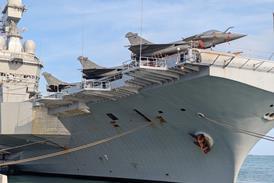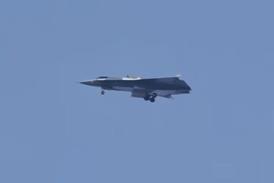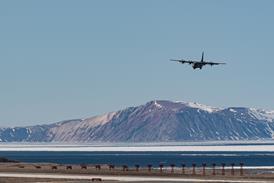By Phil Nasskau
The changing technology in the cockpit with increased safety for passengers both military and commercial is high on the agenda for ITT.
The White Plains, New York company is at Le Bourget with some innovations to display. Leading the way is a new system that benefits both groups of aviators is its RAILS – Radar Assisted Instrument Landing System.

RAILS is able to enhance precision approach radars and ground controlled approaches. It is an add-on package utilising existing radar infrastructure – the integration allows aircraft azimuth and elevation position data from the precision approach radar sensor to transmit ILS signals on approach. The pilot is then guided onto the desired glideslope and centreline by ILS.
From a pilot’s perspective there is no difference between a RAILS and a conventional ILS. “RAILS can provide category 1 ILS without installing the ILS ground equipment,” says Chris Carlson director, US business development.
Distortion
Because RAILS does not suffer from potential beam distortion problems of a normal ILS, it can be used at airfields with unknown or uncontrolled electromagnetic environments. Successful flight demonstrations took place earlier this year.
Also on display is the ALQ-211 family of electronic countermeasures
warfare pods. Although its primary platform is for the F16 Block 50/52, Version 5 of the type is set for Norwegian NH90 helicopters and is a full Electronic Support Measures pod. A tenth version will be available soon.
A development of the ALQ-211 pod is the ALQ-214. This is specific to the Boeing F/A-18E/F and 24 units have been ordered by Australia. “We believe that there is a good possibility that the 211 will feature in the Indian MRCA [Multi-Role Combat Aircraft] competition,” says Carlson. “Additionally, we are launching a pod version of the ALQ-211 that will be able to fit a variety of pylons and stations. We are close to sealing a contract and selection is imminent. We are anticipating a strong double digit growth in electronic warfare over the next few years.”
ITT is looking at future prospects for the countermeasure market and according to director of business development, John Capeci the future could rest with IRCM (Infrared Countermeasures) systems. “The market is awash with technology and the building blocks to create a good IRCM,” he says.
A potential market is the growing VIP transportation system. “This is a niche market, with a central focus on the IR threat from MANPADS [Man-Portable Air Defence Systems]. We are developing a product for this threat and it has just entered flight testing. The future of electronic countermeasures is very much IR rather than RF,(radio frequency)” says Capeci.
Source: Flight Daily News























